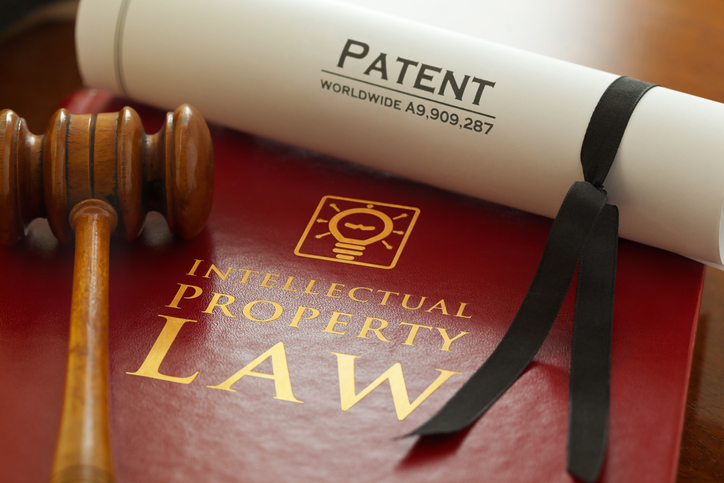
U.S. Supreme Court justices on Monday questioned lawyers for Arthrex Inc., Smith & Nephew and the U.S. government on the constitutionality of the country’s patent tribunal, in a case that could eradicate a key tool for generic and technology companies seeking to challenge patents.
While listening to oral arguments by rival medical device companies, the court’s conservative majority seemed interested in giving the U.S. Patent and Trademark Office (USPTO) Director more supervisory power over judges for the Patent Trial and Appeal Board (PTAB) to keep their appointments in line with the Constitution, but did not go so far as to imply it should be eradicated altogether.

Integrated Enrollment Platforms and Consumer Assistance Centers: The Strongest Advantage for State-Based Exchanges
In the ever-evolving landscape of state-based health insurance exchanges, the convergence of technology and customer service is reshaping how these exchanges operate. The increasing advent of automation and artificial intelligence (AI) is rapidly dismantling the traditional business model that relies on the siloing of technology and customer service centers.
In its lower decision, the U.S. Court of Appeals for the Federal Circuit had found a constitutional flaw with the way PTAB hires and oversees its Administrative Patent Judges (APJs), experts in patent law who make binding decisions in patent litigation on issues of inter partes review and appeals.
The SCOTUS ruling in the Arthrex case, due by the end of June, could threaten this tribunal’s ability to deliver rulings on hundreds of patents per year.
PTAB: Efficient or Unconstitutional?
Formed as part of the America Invents Act in September 2012, PTAB is considered a far more efficient, timely means by which to settle numerous patent disputes outside of the often lengthy, arduous and expensive federal court system.
At issue in the Arthrex case is whether the court’s APJs have decision-making power that falls outside of their constitutional bounds in the appointments clause, which requires “principal officers” to be nominated by the president and confirmed by the Senate.

The Impact Brands: Empowering Wellness Through Natural and Holistic Solutions
In an era of escalating healthcare costs and a growing preference for natural, holistic approaches to health, The Impact Brands emerges as a collective of diverse brands dedicated to supporting overall wellness through natural means.
If the country’s highest court finds the APJs are principal officers, then either the statute that created the PTAB will have to be amended to change the court’s structure or PTAB may be rendered incurably unconstitutional and scrapped altogether.
In his questions, Justice Neil Gorsuch described PTAB as “an unusual animal in the sense that there isn’t final review in the agency head.”
Justice Brett Kavanaugh agreed, saying: “These are multi-million, sometimes billion-dollar decisions being made not by someone who’s accountable in the usual way that the appointments clause demands.”
However, Justice Sonia Sotomayor said that because “all of the policies are vested in the director,” that left him with authority and accountability required by the appointments clause. “It’s clear that APJs are not policymakers,” Justice Sotomayor said, and therefore were not principal officers.
A Surgical Fix or “Vivisection”?
Justice Kavanaugh agreed with Justice Stephen Breyer that the court was loath to “take down the whole system.” Therefore, the court discussed a number of potential fixes for if, indeed, there was a constitutional problem and the Administrative Patent Judges were, indeed, principal officers.
Justice Gorsuch asked if severing the provision of the statute that says only the patent judges may grant rehearing would solve the problem by vesting final authority with the director.
Trying to insert the director above the board as a single decision-maker rather than three-judge panels “isn’t a surgical solution,” Jeffrey A. Lamken, arguing for Arthrex, said. “That’s vivisection.”
However, Justice Kavanaugh was concerned that without taking some action to vest clear authority in the director, this would set a dangerous precedent for other agencies, in the future.
“[T]his would be a model going forward,” Justice Kavanaugh said, “and that would allow Congress to give extraordinary power to inferior officers, which is not how our government is ordinarily structured.”
“Dramatic” Legal Impact
Were the court to decide in Arthrex’s favor, it would have a “dramatic” impact on patent litigation, Dorsey & Whitney partner Case Collard said in a phone interview, because “this tool has been really popular.”
“A lot of patent litigation has either moved there, or it has been a part of the patent dispute so taking it away would have a significant impact on strategy,” Collard said. “Right now you always have to be thinking about PTAB in your legal strategy — is an infringer going to file, are we going to file, should we stay litigation while we fight it out at the patent office?”
“In some ways, if they got rid of PTAB, it would simplify things because we wouldn’t have all of those considerations playing into each case,” Collard said. However, it would have a negative impact on accused infringers, he said, because “the patent office gives you a way to challenge a patent without having your infringement at issue — it’s taking one of their best tools out of the toolbox.”
Amicus brief author Jeff Francer, Senior Vice President and General Counsel for the Association for Accessible Medicines (AAM), certainly agrees with that perspective. His association represents manufacturers and distributors of generic and biosimilar medicines and bulk pharmaceutical chemicals.
“What I heard in its questioning is that the court recognizes the importance of inter partes review and the function and ability of the PTO to invalidate patents that never should have been granted in the first place,” Francer said in a phone interview. “There’s a reason for patents, to incentivize innovation, but what IPR is meant to do is to strike down government monopolies when they are not earned, which is to say when there’s not actual innovation behind the patent.”
“Even among judges that thought PTAB judges are principal, there seemed to be a reluctance to throw out the IPR system, which would be counter to congressional intent and harm patients looking for generic and biosimilar alternatives to brand-name drugs,” Francer said.
Francer further noted that “several justices, Breyer in particular, recognized there are administrative law judges and quasi-judicial employees throughout the bureaucracy and this decision should not upend all of their status.”
In an amicus curiae brief filed in Arthrex, Francer told the court that the Federal Circuit’s ruling below had left IPR in “disarray,” with the uncertainty having its most significant impact on biosimilar and generic patent challengers and the public at large.
Since ruling in Arthrex, the Federal Circuit has vacated dozens of PTAB decisions on appeal, leaving the validity of major technology, chemical and pharmaceutical companies’ intellectual property in limbo.
The PTAB has already survived one Supreme Court challenge: In 2018, justices found the panel wasn’t unconstitutionally wielding powers that should be reserved by the courts. In June, we will see if it can survive another.
Deputy Solicitor General Malcolm Stewart argued for the government. Mark A. Perry of Gibson Dunn & Crutcher LLP in Washington argued for Smith & Nephew. Jeffrey A. Lamken of MoloLamken LLP in Washington argued for Arthrex.
Photo: stocknshares, Getty Images












